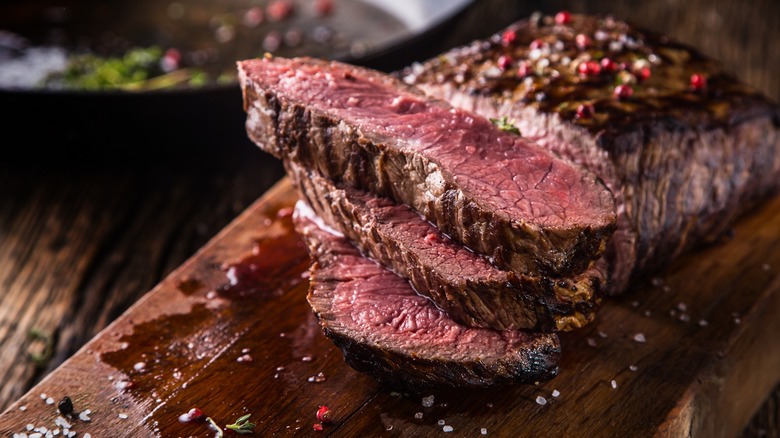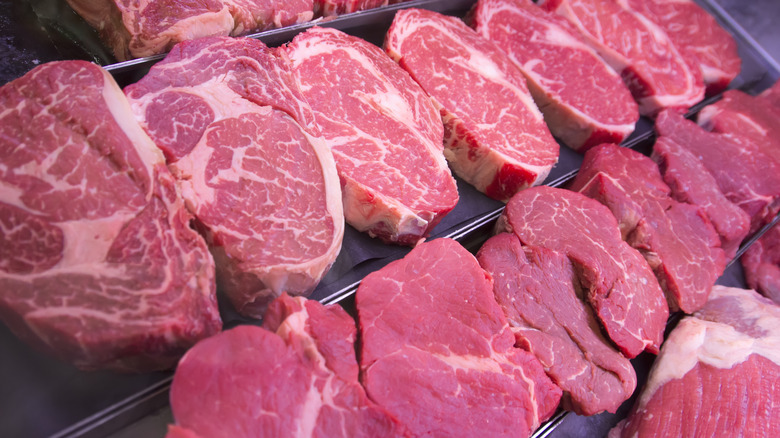How To Find The Leanest Cuts Of Steak At The Grocery Store
When it comes to beef, one doesn't immediately consider it a difficult-to-shop-for food item. However, it can get tricky when you start narrowing down exactly what you're looking for. Steaks, for example, come in many different shapes, cuts, sizes, and levels of fattiness. In a world that's growing increasingly conscious about what it eats, it's important to be able to reliably find food that fits your dietary needs.
Indulging in the biggest, juiciest steak is fine from time to time, and you can easily find that just by peering at the butcher's counter. But how do you find the leanest cuts of steak for when you want to be more mindful of your fat consumption? The USDA makes it easy, as they regulate how every steak gets labeled. When a pack of steaks carries the label "Lean" or "Extra Lean" it means the meat contains at most 10 or 5 grams of fat, respectively, per 3 1⁄2 ounces. If you don't see prepackaged steaks indicating leanness, you could always request a steak from the counter and ask that the butcher trim off as much excess fat as possible.
What cuts should you look for?
Aside from simply checking labels, it helps to know what cuts of steak are lean to begin with. One of the most popular steaks, reputed to be lower in fat than ribeyes and skirt steaks, is the filet mignon. They may be relatively low in fat, but the average four-ounce filet doesn't qualify under the USDA "Lean" classification because it contains around 20 grams of fat. You can't trim fat off filet mignon because so much of it is intramuscular. Instead, there are plenty of other options that can save you unwanted fat intake.
To be on the safe side, look for the following cuts of steak: eye of round, sirloin tip side steak, top round steak, bottom round steak, and top sirloin. Each of these can be classified by the USDA as "Lean" and "Extra Lean" cuts, ensuring you won't have to fret over the fat content. When cooking these steaks, you can choose to add extra fat in the form of oil and butter to compensate for their inherent leanness. But if lean meat is your goal, you can cook with just a tablespoon of oil and the seasoning of your choice.

